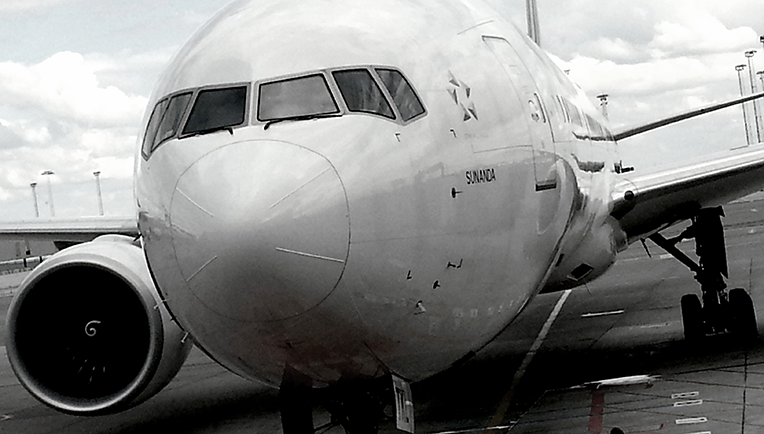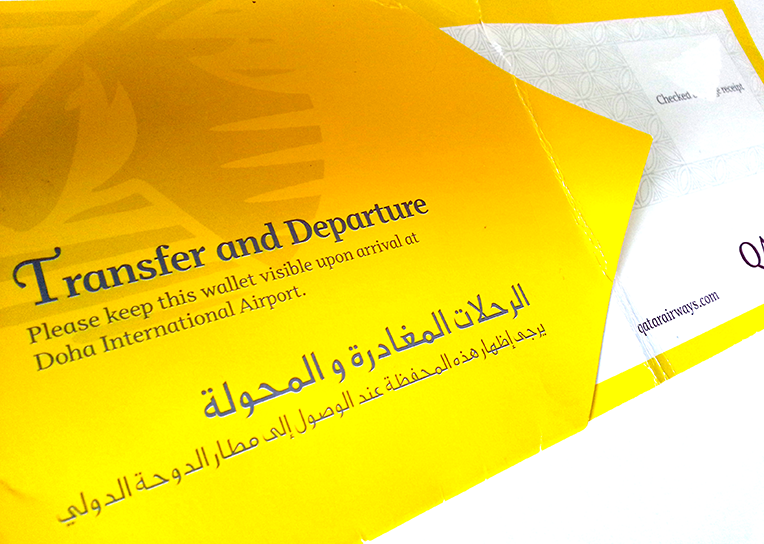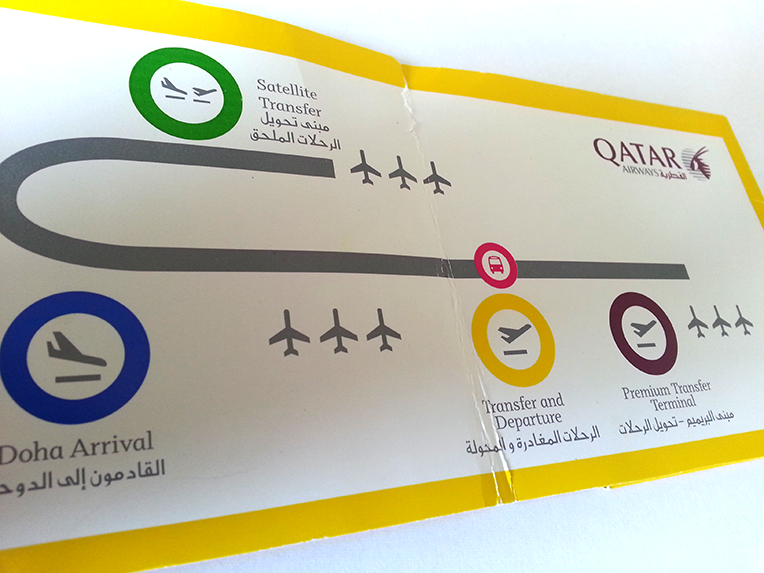Assistant professor in informatics, information architect, designer, piano player, author.
Four Colors and a Chicken Pomodoro
A couple of weeks ago I flew Qatar Airways all the way to Melbourne, Australia, for a conference: a long 24-hour haul across most of the globe that took me first from Copenhagen to Doha, Qatar, where the company has their main hub. We had our wheels down around 10:00pm local time in 40 degrees heat and I was off for Melbourne a couple of hours later. And while the trip was comfortable, uneventful, and generally positively unremarkable, its major thrill being how to avoid to spill chicken pomodoro all over one’s pants and shirt (I failed, if you really want to know), my boarding passes were not. They came in a brightly colored yellow folder, with instructions to have them visible and handy when leaving the plane in Doha.

While we have become generally good at managing the large amounts of information we have to move around just in order to make commercial flying a possibility first and a sensible proposition second, flight connections can be tricky, and Doha is not only an entry point to Qatar, but also a over-utilized exchange point for many who travel East or West. In 2012 the airport saw roughly 21 million passengers go through its 3 terminals.
A complex choreography moves travelers from one flight all the way to to their next connections. With such numbers, staying on time, avoiding potentially disruptive mistakes and keeping customers happy is not an easy feat. All signage within Doha airport is routinely bilingual, using Arabic and English and working swell, but while we have become generally good at designing wayfinding systems to move people around, the major friction point travelers encounter comes before even entering the terminals.
Travelers move between planes and terminals on buses, and airport buses are not the best of places for either signage-spotting or paying attention to detailed explanations: we humans tire easily, and we tend to get distracted and irritable after hours of immobility, tortured by plane seats and vicious elbow-fighting businessmen.
Most of the time we might not know what we have to look out for. Some of us do not care in the least and take traveling like some expensive variation of the “Moving people” improv game: I’ll mind my business, sooner or later someone will take care of me and move me where I have to be. Buses in Doha make it even worse, as all windows are darkened to prevent overheating. Being on the lookout for signs might be difficult, impractical, or plain impossible if you are standing mid of the bus and trying to prevent someone else’s solid-steel backpack buckles to mark you with possibly interesting but absolutely impractical permanent scars.
So Qatar Airways devised a simple solution to help people move around the airport that works because it is implemented systemically and because it begins way before you get to Doha: you start to learn about your terminal and what you have to do on the ground when you check-in and you either print or receive your boarding passes.
If you are printing your pass home, you get a standard A4 page sporting a very evident color-coded area: yellow, blue, or green. If you check-in at the airport or drop your baggage, you will receive standard passes in a similarly color-coded folder, and coordinated tags for any hand luggage you might carry.
These colors correspond to the different terminals and activities involved with your trip when you hit Doha: yellow is for transfers, green is for short-range transfers between planes, blue is for people entering Qatar. Business class is handled separately and color-coded purple.
When the plane begins its descent into Doha, you get a reminder. A video details what is going to happen, and how the folder containing the boarding passes (or the passes themselves) is going to be an important element of identification. You are repeatedly told to keep it visible, and the tags on your bags reinforce these visual clues: not only they allow you to know what is your color, and what group you belong to (a strong, no-fuss message: if unsure, flock. Stay with your color), but they allow airport personnel to catch the occasionally straying or unaware bird before anything potentially disruptive happens.
When on the bus, a recorded message plays in the background reminding you of how the system works. At this point it’s visual, aural, and using every means to get to you: when you arrive at the terminal, you find out that this color-coding is applied to the building themselves and that staff awaits at the doors waving facsimiles of the right boarding pass for that stop, and that they actively check that nobody who should be getting off the bus remains onboard.
If you exclude the video played in flight, most of the technology involved amounts to “paint something in different colors, explain people why, and stick to it”. But the basic value of consistency and of delivering an unequivocal message that does not rely (only) on any spoken language cannot be stressed enough.
In all, this is a brilliant information architecture deployed across many different channels, systemically, and something that we should implement more often when creating or managing any type of large or public-facing service. I’m pretty sure local and national public transport systems could benefit from applying some of this cross-channel logic to their information architectures, for example, but also we at JIBS could take a hint and figure out if there is any meaningful color-coding going on here. When it comes to buildings, letterheads, and most importantly at this time of the year, students’ overalls, it seems we are all over the place.
More on the system can be read at Qatar Airways’ page explaining Doha color-coded arrivals External link, opens in new window..
Detta är en bloggtext. Det är skribenten som står för åsikterna som förs fram i texten, inte Jönköping University.







